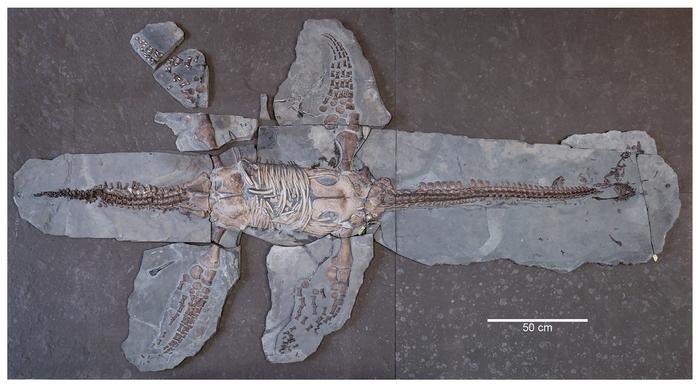www.vox.com
The warming spring air is a welcome relief from the bitterly cold winter across much of the US, but millions of seasonal allergy sufferers are getting buried under a pollen tsunami, with sneezing, headaches, watery eyes, and stuffed sinuses sending them right back indoors. Already, Atlanta has broken its pollen count record, with 14,801 grains per cubic meter spewing from pine, oak, and birch trees. Houston also reported its highest pollen counts since 2013, when records began.RelatedGet ahead of allergy season this yearThe Asthma and Allergy Foundation of America (AAFA) projects that 2025 will be yet another brutal year for seasonal allergies across the country, with the worst-afflicted cities in the southern US. Your red eyes and runny noses dont deceive you seasonal allergies are getting worse, a miserable reality for nearly one in three US adults and one in four children.Why? Sneezing and sniffles are some of the sirens of climate change. In fact, because of warming, pollen is now a nearly year-round menace in some parts of the US. Pollen, the main seasonal allergy trigger, is emerging earlier in the year, in higher concentrations, and lasting longer year after year. In the springtime, the first pollen allergens are from trees, and that is starting 20 days earlier than it did 30 years ago, said Kenneth Mendez, CEO of AAFA. Rising concentrations of carbon dioxide in the atmosphere are directly inducing plants to produce more pollen while extending the temperature conditions that trigger pollen production in plants. We hear all the time, Ive never had allergies before and now I suddenly feel like I have allergies, or I feel like my allergies are getting a lot worse and thats because the allergic load is that much higher because of climate change, Mendez said. For most people, seasonal allergies are an unpleasant nuisance. But with millions feeling blergh at the same time, it adds up to a huge economic burden in lost productivity. Asthma, allergic rhinitis the condition you probably know of as hay fever and related allergy conditions cost the economy billions of dollars each year in lost work days, medications, and doctors visits. There are also people for whom pollen is a more serious problem and can lead to dangerous complications or exacerbate other health issues. One study found that tree pollen allergies lead to 25,000 to 50,000 emergency room visits per year, two-thirds from people under the age of 18.Over time, as pollen counts increase, more people with a higher sensitivity threshold are finding out the hard way that these tiny grains are a hazard. Other people are also finding out that doors and windows cant protect them as some of the tiniest pollen grains seep in. If the trendlines continue, I think more people are going to feel miserable from allergies, Mendez said.How we keep making allergies worse for ourselvesThe problem for allergy sufferers is that their bodys defense mechanisms sometimes overreact to something benign. Usually, it leads to mild, easily treatable symptoms. But allergens can also trigger more serious complications like asthma attacks, causing wheezing, chest tightness, and shortness of breath. In rare cases, they can lead to anaphylaxis, a whole-body reaction where the airways can swell shut and blood pressure drops to dangerously low levels. The vast majority of pollen allergies are more annoying than dangerous, but seasonal pollen is so ubiquitous that its almost impossible to avoid, sneaking indoors through vents, window seals, on clothing, and in pet fur. Some people are more sensitive than others, but the relentless, growing exposure can add up to misery even for those with mild allergies. Pollen grains range in size from 100 down to less than 10 microns, allowing them to penetrate deep into the lungs and irritate airways. Many types of plants release pollen as part of their reproductive cycle. Generally, trees spread pollen in the spring, grasses over the summer, and ragweed in the autumn. Airborne cloud of pine pollen from male pine cones in Arizona. Wild Horizons/Universal Images Group via Getty ImagesHowever, the historical pollen timing patterns have already shifted. Tree pollen is wafting off of branches earlier in the season almost every year. Some grass species have seen their pollen release days delayed by almost a month while their overall season has grown longer. As a result, grass pollen increasingly overlaps with the ragweed pollen season, which itself has been extended by more than three weeks in some parts of the country since 1995. There are two key mechanisms driving this trend, both induced by humanitys appetite for fossil fuels. Increasing concentrations of carbon dioxide in the atmosphere from burning coal, oil, and natural gas directly induce many plant species to produce more pollen. Carbon dioxide can make plants grow bigger and faster, and produce more flowers, which leads to more pollen. More pollen leads to more seeds, which means even more plants spraying pollen the next season. Higher levels of carbon dioxide in the atmosphere are also warming the planet and changing the climate. In general, that means warmer, shorter winters and earlier springs, which leads to longer growing seasons for plants. These trends will continue as global average temperatures go up, making allergies a significant public health burden. Some parts of the country, such as Texas, are on track to see pollen counts almost double by 2050 compared to 2000. For many people, allergies are an added complication on top of other health and environmental conditions. Air pollution from ozone, particulates, sulfur, and nitrogen compounds can cause their own breathing problems, but when they intersect with allergies, they can make symptoms even worse. Pollution from roads can make pollen from nearby plants more potent at triggering allergic reactions. Smoke from wildfires can also exacerbate allergies. Cities may not offer much refuge. Changes to the landscape like urbanization can create a more favorable habitat for plants like ragweed. City centers also tend to warm up faster than their rural surroundings and experience higher concentrations of air pollutants, compounding the effects of allergies. These factors are especially potent in low-income and underserved communities. Pollen isnt the only allergen changing with the climate either. Rising temperatures and precipitation in some areas are increasing the number and duration of allergenic mold spores. Extreme weather further worsens the problem, as the damage and destruction create conditions for more mold. That was evident in New Orleans last year as storms like Hurricane Francine soaked the city. When these storms come through, they create so much damage over the landscape of the state. Some communities have resources to immediately move in and repair roofs and patch windows, and then we have a lot of folks that simply dont have those resources. With leaking roofs, you have mold growth indoors, said John Carlson, who leads the high-risk allergy division at the Ochsner health system in New Orleans. Because its so warm here, we can grow mold year round as long as theres moisture. High winds from storms can also whip up dust, which can then trigger asthma. Additionally, theres a phenomenon called thunderstorm asthma, where the weather conditions can rupture pollen grains into smaller, more allergenic fragments, triggering asthma attacks. Its not clear whether the overall number of people with seasonal allergies is increasing. The US may be approaching a plateau in the number of people who are susceptible to pollen, Carlson said. At the same time, there are other conditions that can present with allergy-like symptoms, and at high enough concentrations, even people without allergies will wheeze. In New Orleans, we have a ton of oak pollen I mean, just so much oak pollen in the air and you commonly have a lot of people who dont have oak pollen allergy nevertheless with itchy eyes and the sneezing from just the irritant effect of the particles, Carlson said. The good news is that there are ways to contain the worst effects of seasonal allergies. For people with a history of bothersome seasonal allergies, seeing an allergist and finding out what their specific triggers are and what medicines work is key. It may make sense to start taking medications like nose sprays or over-the-counter allergy drugs before pollen ramps up.Related4 tips for dealing with a ferocious allergy seasonWe generally say to have your medications in your system close to two weeks ahead of time because it takes some time to build up, Mendez said. For people who dont know if they have allergies but are concerned about the threat, pay attention to your symptoms and see an allergist if you do start to experience irritated eyes and airways. There are also more aggressive interventions for people with severe allergies who dont respond to other medicines like desensitization therapy, also known as allergy shots.Some of the same measures for avoiding air pollution also work for pollen. Pay attention to pollen forecasts in your local area. Avoid being outside and close doors and windows during high pollen release times, particularly in the morning. Leave your coat and shoes outside or locked away before you settle down at home. Wipe down your dog after a walk. Use a HEPA air filter in your living spaces. Over the long term, its prudent to curb emissions of heat-trapping gasses that worsen climate change and allergies. For now, keep the tissues close. See More:










